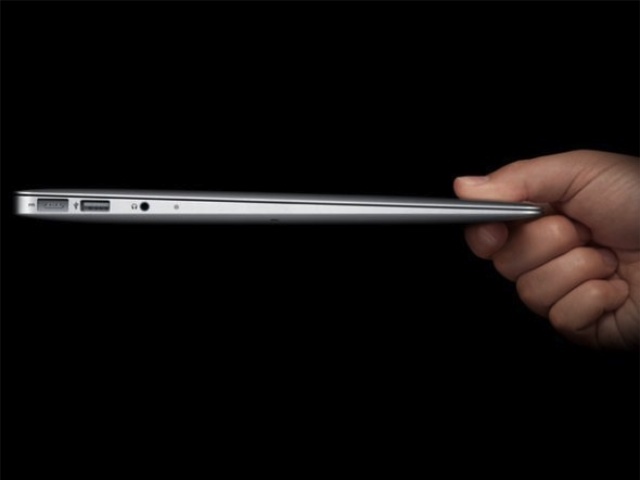How thin is too thin? A question that used to be relegated to the fashion industry is now seeping into the tech sector as Apple is reportedly sourcing thinner components for the 2013 MacBook Air and MacBook Pro.
According to Digitmes, Apple plans on accomplishing this by reducing the thickness of the light guide plates for the illuminating keyboards from 0.4mm to 0.25mm. We’re talking splitting hairs here. So, would it really even be noticeable by users?
Kyle Wiens runs iFixit, a company that does high-res teardowns of new products and DIY repair guides. He previously blogged about his experience tearing down a MacBook Pro with Retina Display and points out that because of measures Apple took to reduce its size, it is the LEAST repairable laptop they have ever taken apart. The display is fused to the glass, the RAM is soldered to the logic board and the battery is glued to the case. Translation: No quick fixes by third parties. Customers must mail in their laptops to Apple directly for a $200 replacement.
Wiens also makes an interesting argument:
We have consistently voted for hardware that’s thinner rather than upgradeable. But we have to draw a line in the sand somewhere. Our purchasing decisions are telling Apple that we’re happy to buy computers and watch them die on schedule. When we choose a short-lived laptop over a more robust model that’s a quarter of an inch thicker, what does that say about our values?
Unless you’re hardcore technology geek, you wouldn’t necessarily know that these are the measures Apple takes to make your laptop thinner. All we see is this sparkly, shinny new device that’s even better and cooler than the one before and for some reason, we LOVE when the new element is “omg it’s thinner!” Maybe it’s just the way the world is wired and now it’s seeping into our gadgets.



